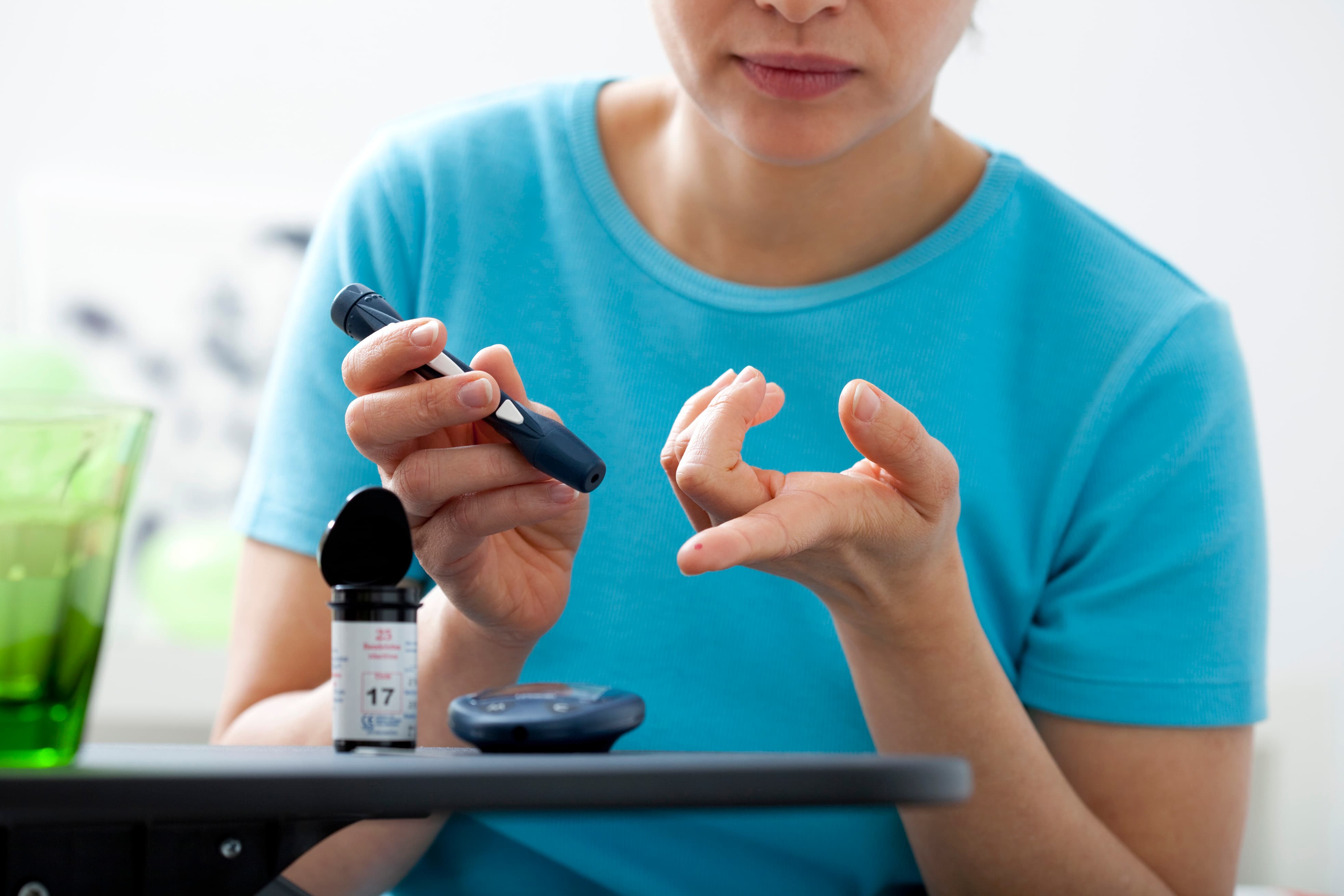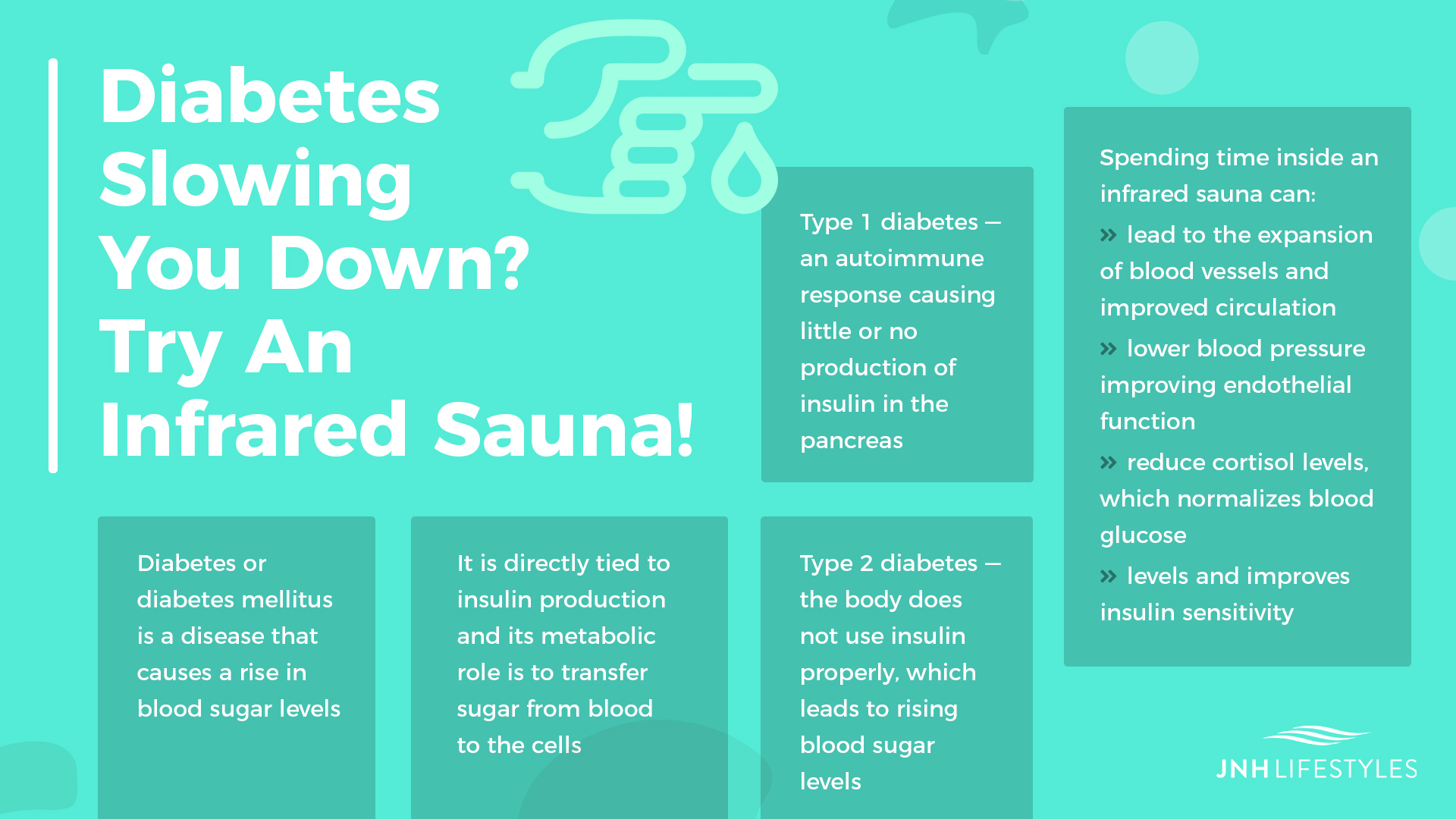Infrared Saunas & How They Relieve Diabetic Symptoms
Diabetes is a serious disease that affects millions of people every year all over the world, and it seems this trend is on the rise. Based on the data from the World Health Organization, the number of diabetes patients increased to 422 million in 2014 compared to the 108 million registered in 1980. A staggering 1.6 million deaths were attributed to diabetes in 2016, making it the seventh leading cause of fatal outcomes for that year according to WHO.
These facts only stress the importance that this disease should not be taken lightly since it can affect people regardless of gender, age and race. Although it is most prevalent in low to middle-income countries, diabetes is present in all classes of the population, even among the rich and famous. Some types of diabetes depend on lifestyle and habits, like type 2 diabetes, which is the most present form of the disease worldwide [1]. Type 1 diabetes, on the other hand,is caused when a person's own immune system attacks the insulin cells in the pancreas and is believed to be connected to a wider array of causes, like genetics and hereditary factors [2].
Whatever the cause, all types of diabetes carry certain symptoms that can have a significant impact on a patient's quality of life. Besides medication, other ways may help control the symptoms of diabetes, with the use of infrared therapy being one of them. So, to understand how to deal with signs of diabetes, it’s important to know more about the disease and how you can personally contribute to its relief.
What Is Diabetes?

Diabetes or diabetes mellitus (how it is medically referred to) is a disease that causes a rise in blood sugar levels. It is directly tied to insulin production and its metabolic role to transfer sugar from blood to the cells. Those who suffer from diabetes do not have enough insulin or their bodies cannot use the deposits they make in the right way. Based on how the body treats insulin, there are several types of diabetes:
- Prediabetes condition — higher blood sugar but not sufficiently high to diagnose type 2 diabetes.
- Type 1 diabetes — an autoimmune response causing little or no production of insulin in the pancreas.
- Type 2 diabetes — the body does not use insulin properly which leads to rising blood sugar levels.
- Gestational diabetes — happens during pregnancy when the placenta produces hormones blocking insulin and causing high blood sugar levels.
Diabetes symptoms, like weight loss, increased hunger, fatigue, increased thirst, frequent urination and blurry vision can occur with all types of this disease. However, some are specifically connected to gender, like erectile dysfunction for men and yeast urinary tract infections for women. If diabetes signs are left untreated or caught late, they may cause damage to certain organs, usually kidneys and eyes, and nerves.
The most commonly encountered type of diabetes is type 2, caused by physical inactivity, excess weight, high blood pressure, increased triglycerides and high cholesterol, as well as unhealthy habits, diet, and stress [3]. But leading a fulfilling life with diabetes symptoms can be possible with certain adjustments and healthy practices.
Infrared Saunas And Diabetes Symptoms
Among many infrared sauna benefits, patients with diabetes can find several ways to control and lessen their symptoms. Spending time inside an infrared sauna can lead to the expansion of blood vessels and improved circulation because of the heat therapy it provides. This can be beneficial for people with high blood pressure — one of the major risks for developing or worsening diabetes symptoms since regular use of infrared therapy can lower said blood pressure [4]. Infrared saunas can have a wide range of benefits when it comes to cardiovascular risks [5], something that diabetes patients can be more susceptible to. One of these infrared therapy benefits is the improvement of endothelial function, a condition that is common in diabetics and may be the early onset of hardening of the arteries, also known as arteriosclerosis [6].
Since stress can aggravate the symptoms of diabetes or lead to the onset of this disease, regular use of infrared light therapy may reduce cortisol levels, normalizing blood glucose levels, and improving insulin sensitivity [7].Some of the diabetes symptoms are sores and infections, especially on feet, which heal too slowly or do not heal at all, and that can lead to serious complications. Near infrared therapy can stimulate healing and help in the treatment of cutaneous wounds, which can develop in some diabetic patients [8].
Infrared therapy can also be good for those currently working on losing weight or trying to maintain their current one [9]. Obesity can lead to high cholesterol levels, increased triglycerides, and chronic inflammation, one of the major causes of insulin resistance in the liver, muscle and fat [10]. Since infrared saunas have anti-inflammatory properties, they can help with these symptoms of diabetes as well [11].Patients at risk of developing diabetes or already suffering from the disease still have to pay attention to their diet and be physically active, but combining both with infrared therapy can help them mitigate diabetic symptoms, as well as help maintain a healthy weight.
Living A Healthy Lifestyle
Whether you have diabetes or precursors to developing this disease, you can still do a lot to live a healthy life and adopt more beneficial habits. JNH Lifestyles’ infrared saunas, like the ones from the Joyous Collection, provide access to thermal therapy in the comfort of your home and with minimal costs. With regular exposure to infrared therapy, you can improve quality of life, even if you already suffer from diabetes type 2 or have the prediabetes condition [12].
Even though infrared saunas are not a cure, it is a powerful resource for fighting diabetes symptoms with your prescribed therapy and routine checkups by your physician. Changing habits and lifestyle can be hard, but an infrared sauna can make it more comfortable and help you make the first step toward enhancing your health.

Resources
[1] Hubert Kolband Stephan Martin. (2017). “Environmental/lifestyle factors in the pathogenesis and prevention of type 2 diabetes.” ncbi.nlm.nih.gov, National Center for Biotechnology Information, July 2017, https://www.ncbi.nlm.nih.gov/pmc/articles/PMC5516328/.
[2] Marian Rewers and Johnny Ludvigsson. (2016). “Environmental risk factors for type 1 diabetes.” ncbi.nlm.nih.gov, National Center for Biotechnology Information, June 2016, https://www.ncbi.nlm.nih.gov/pmc/articles/PMC5571740/.
[3] Marcovecchio, ML, and Chiarelli, F. (2013). “The effects of acute and chronic stress on diabetes control.” ncbi.nlm.nih.gov, National Center for Biotechnology Information, October 2013, https://www.ncbi.nlm.nih.gov/pubmed/23092890.
[4]Brunt, V. E, et al. (2016). ”Passive heat therapy improves endothelial function, arterial stiffness and blood pressure in sedentary humans.” ncbi.nlm.nih.gov, National Center for Biotechnology Information, June 2016, https://www.ncbi.nlm.nih.gov/pubmed/27270841.
[5] Beever,R. (2009). “Far-infrared saunas for treatment of cardiovascular risk factors.” ncbi.nlm.nih.gov, National Center for Biotechnology Information, July 2009, https://www.ncbi.nlm.nih.gov/pmc/articles/PMC2718593/.
[6] Imamura M, et al. (2001). “Repeated thermal therapy improves impaired vascular endothelial function in patients with coronary risk factors.” ncbi.nlm.nih.gov, National Center for Biotechnology Information, October 2001, https://www.ncbi.nlm.nih.gov/pubmed/11583886.
[7] Ryotokuji K, et al. (2013). “Preliminary results of pinpoint plantar long-wavelength infrared light irradiation on blood glucose, insulin and stress hormones in patients with type 2 diabetes mellitus.” ncbi.nlm.nih.gov, National Center for Biotechnology Information, 2013, https://www.ncbi.nlm.nih.gov/pubmed/24204095.
[8] Byrnes KR, et al. (2004). “Photobiomodulation improves cutaneous wound healing in an animal model of type II diabetes.” ncbi.nlm.nih.gov, National Center for Biotechnology Information, August 2004, https://www.ncbi.nlm.nih.gov/pubmed/15345169.
[9] Kim, Sungwoon, et al. (2017). “Does treadmill walking with near-infrared light applied to the abdominal area reduce local adiposity and body weight?” ncbi.nlm.nih.gov, National Center for Biotechnology Information, October 2017, https://www.ncbi.nlm.nih.gov/pmc/articles/PMC5684004/.
[10] Carl de Luca and Jerrold M. Olefsky. (2008). “Inflammation and Insulin Resistance.” ncbi.nlm.nih.gov, National Center for Biotechnology Information, January 2008, https://www.ncbi.nlm.nih.gov/pmc/articles/PMC2246086/.
[11] Michael R. Hamblin. (2017). “Mechanisms and applications of the anti-inflammatory effects of photobiomodulation.” ncbi.nlm.nih.gov, National Center for Biotechnology Information, May 2017,https://www.ncbi.nlm.nih.gov/pmc/articles/PMC5523874/.
[12] Beever, R. (2010). “The effects of repeated thermal therapy on quality of life in patients with type II diabetes mellitus.” ncbi.nlm.nih.gov, National Center for Biotechnology Information, June 2010, https://www.ncbi.nlm.nih.gov/pubmed/20569036.


